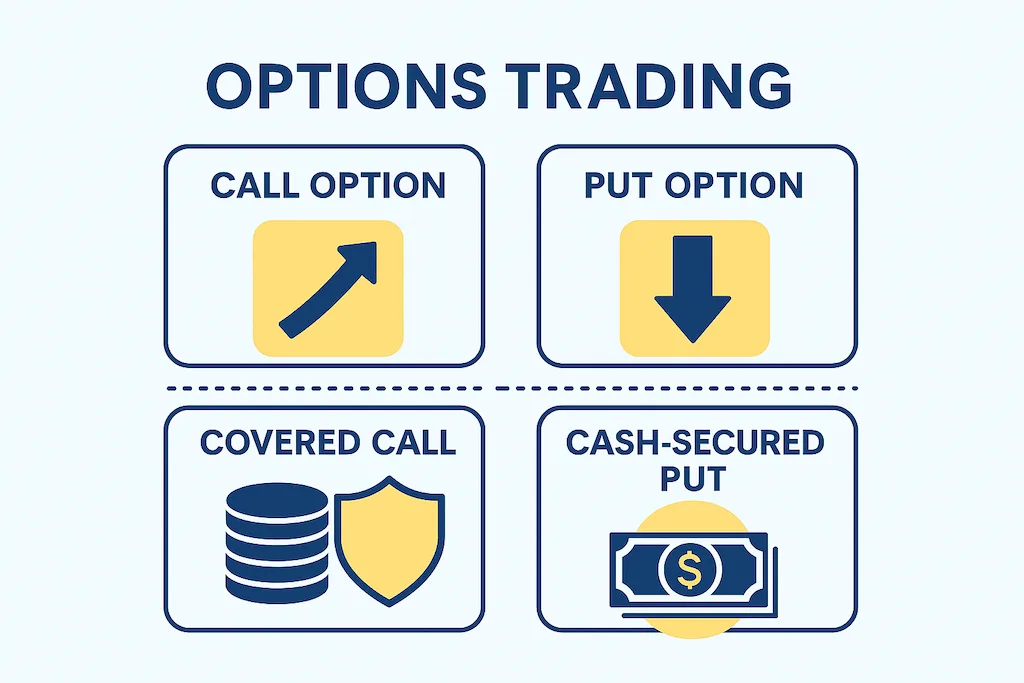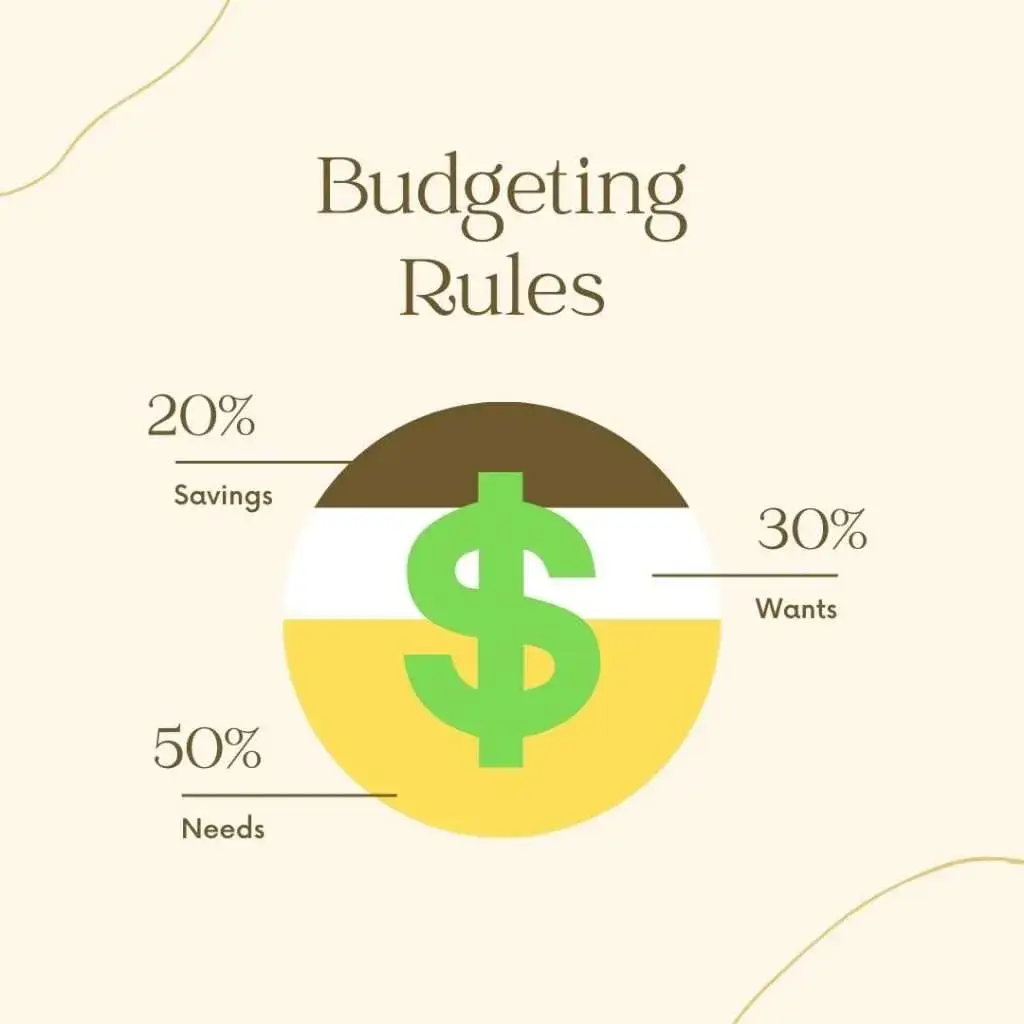
Table of Contents
Disclaimer: The information provided in this blog post is for educational and informational purposes only and does not constitute financial or investment advice. Before making any investment decisions, consider consulting with a licensed financial advisor, tax professional, or other qualified expert.
Options Trading Explained
Options trading can seem confusing at first, but it becomes clearer when broken down into its core parts. Whether you’re just starting out or already trading stocks, learning about call options, put options, covered calls, and cash-secured puts can give you more flexibility and control in the market.
In this guide, we’ll explain what each of these strategies means, how they work, and walk through simple examples to help you understand them. By the end, you’ll know how to use them to boost your income or protect your investments.
What Are Options?
Options are contracts that give you the right, but not the obligation, to buy or sell a stock at a specific price before a certain date. There are two main types of options:
Call Options – give you the right to buy a stock.
Put Options – give you the right to sell a stock.
Let’s look at each one more closely.
Call Options
A call option gives the buyer the right to buy a stock at a set price (called the strike price) before the option expires.
Example:
You believe Apple (AAPL) stock will go up.
AAPL is trading at $180.
You buy a call option with a strike price of $185, expiring in one month, for $3.00 per share ($300 total, since one option = 100 shares).
If AAPL rises to $195 before expiration:
You can buy 100 shares at $185 and sell them at $195.
That’s a $10 gain per share = $1,000 profit minus your $300 cost = $700 net profit.
If AAPL stays below $185:
You let the option expire worthless and lose the $300.
Put Options
A put option gives the buyer the right to sell a stock at a set price before it expires.
Example:
You are thinking that Tesla (TSLA) might drop in price.
TSLA is trading at $250.
You buy a put option with a strike price of $240 for $4.00 per share ($400 total).
If TSLA drops to $220:
You can sell 100 shares at $240 instead of $220.
That’s a $20 gain per share = $2,000 profit minus your $400 cost = $1,600 net profit.
If TSLA stays above $240:
You let the option expire and lose the $400.
Covered Calls: Earning Income on Stocks You Own
A covered call is when you sell a call option on a stock you already own. It’s a way to earn income if you think the stock won’t move much.
Example:
You own 100 shares of Microsoft (MSFT), trading at $320.
You sell a call option with a $330 strike price, expiring in one month, for $2.00 per share ($200 income).
If MSFT stays below $330:
You keep your shares and the $200.
If MSFT rises above $330:
You must sell your shares at $330.
You still make a profit, but you miss out on any price above $330.
You keep the $200 premium.
This strategy generates income but caps your potential upside.
Cash-Secured Puts: Buying Stocks at a Discount
A cash-secured put is when you sell a put option and keep enough cash on hand to buy the stock if assigned. It’s a great way to buy a chosen stock at a lower price.
Example:
You want to buy shares of Amazon (AMZN), now at $125.
You sell a put with a $120 strike price, expiring in 1 month, for $3.00 per share ($300 income).
You set aside $12,000 to buy 100 shares if assigned.
If AMZN stays above $120:
You keep the $300 and don’t have to buy the stock.
If AMZN drops below $120:
You buy the shares at $120, but your cost basis is $117 ($120 – $3 premium).
You still own the stock at a discount.
This strategy generates income and helps you buy stocks for less than the market price.
Quick Comparison Table
| Strategy | Best For | Risk | Reward |
|---|---|---|---|
| Call Option | Speculating on stock price going up | Premium paid | High if stock rises |
| Put Option | Hedging or speculating on a drop | Premium paid | High if stock falls |
| Covered Call | Generating income on owned shares | Stock may be sold at strike price | Limited, steady income |
| Cash-Secured Put | Buying stock at a discount | Must buy stock if it falls | Income plus potential discount |
Conclusion
Options trading doesn't have to be overwhelming. Whether you're looking to speculate, protect your investments, or generate steady income, understanding these four strategies gives you the confidence to begin:
- Call Options – Bet on rising prices.
- Put Options – Bet on falling prices or hedge your portfolio.
- Covered Calls – Generate passive income from stocks you already own.
- Cash-Secured Puts – Earn premiums and possibly buy stocks at better prices.
Start small, focus on learning, and remember—risk management is key when managing your investment portfolio. Explore other beginner-friendly resources on stock trading and try our Stock Analysis Dashboard to test strategies safely.

